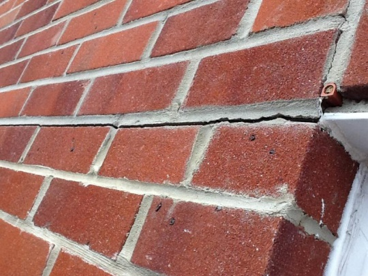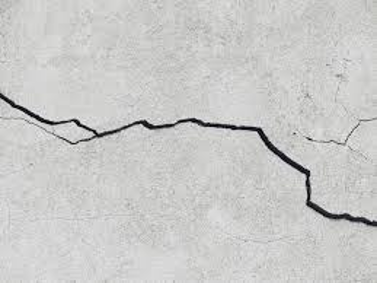What causes Horizontal Cracking?
The causes of horizontal cracking will vary depending on the structure of the property, the construction type of the property and the surrounding areas / location.
Usually, horizontal cracking indicates that an element within the wall has failed such as the wall ties. Depending of the severity of the cracking, this could be a safety concern.
Cracks in brick or concrete block walls can be caused for various reasons. One of the more serious factors is subsidence or foundation movement. Alterations in the ground conditions surrounding a house can causes it to shift, which leads to cracking within the walls.
How severe if your cracking?
The severity of the cracking will depend on the size. Broadly speaking cracking is put into 6 categories of severity:
Category 0 – Hairline cracks of less than about 0.1 mm which are classed as negligible.
Category 1 – Crack widths up to 1 mm. Can be treated easily.
Category 2 – Crack widths up to 5 mm. Cracks easily filled.
Category 3 – Crack widths are 5 to 15 mm, or several of circa 3 mm. Require minor remedial works as weather-tightness often impaired.
Category 4 – Typical crack widths are 15 to 25 mm, but also depends on number of cracks. Extensive damage which requires breaking-out and replacing sections of walls.
Category 5 – Typical crack widths are greater than 25 mm but depends on number of cracks. Structural damage that requires a major repair job.
What are the Consequences of Horizontal Cracking?
The consequences of Horizontal cracks depend on the site conditions;
- Building size,
- Shape,
- Structure,
- Condition of surrounding elements,
- Ground movement,
- Location of the cracking and so on.
Note: it is important for a specialist to inspect the property in order assess the severity of the crack and the likely causes. This will help scope the remedial measures from the specialist.
What are the remedial measures for Horizontal Cracking?
The following steps should be followed:
- Instruct a specialist to inspect the area of concern and surround areas to obtain a full picture in order to establish the cause of the cracking. No remedial works should take place until the root cause has been identified.
- Repair strategies will range from major building alterations / remedial works to limited cosmetic works.
Potential repair methods may include:
- Monitoring works
- Underpinning
- Removing area of brickwork, replace defective elements such as wall tiles and replace
- Cosmetic repairs
If you have cracking in your existing property or if you have seen a crack in a potential property for purchase contact our team today for advice. Risk Averse provides a range of services, surveys and reports to suit residential, commercial and industrial sectors across Rochdale, Manchester, the North West and the rest of the UK.


